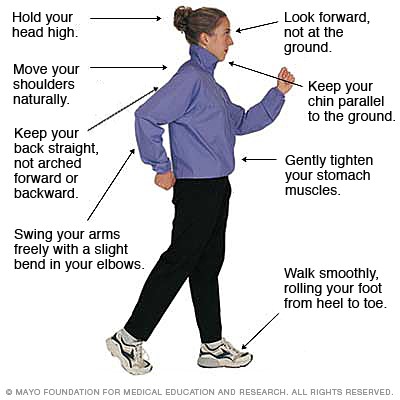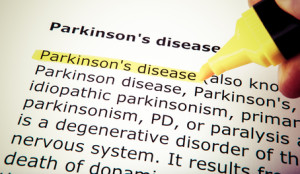An exercise management program specifically designed to attack Parkinson’s disease can help you reduce falls, improve energy, and restore function so you can live a normal, independent, and productive life.
Medical exercise and medical fitness professionals can guide you in using exercise to recover a happy, fulfilling, independent life with this condition.
I know this because I have witnessed exercise win. I have seen people claim victory. I have seen them take their life back from the thief called Parkinson’s (keep reading and I will share a story with a great ending)
The Condition
Just to familiarize you, Parkinson’s is a progressive neurologic disorder that affects 1% of the population over 50. The condition progressively destroys cells in the brain that produce dopamine, a neurotransmitter controlling movement. Parkinson’s is characterized by tremors, postural instability, impaired movement, rigidity, a shuffling walk, difficulty moving the body, and speech impairment.
The Parkinson’s posture is characterized by an excessive forward head drop, rounded shoulders, forward trunk lean, and side to side shuffling. This posture is very taxing on the body and leaves its afflicted depleted of strength, energy, and confidence in their body.
Falls are a major concern with Parkinson’s disease as the body loses its ability to “catch” itself if it starts to fall. A person will experience decreased reaction time, and a feeling of “slowness”, making it very easy to fall and sustain serious injury.
If I just described your daily struggle, there is GOOD NEWS!
Medical Exercise
An exercise management program specifically designed to attack Parkinson’s disease can help you reduce falls, improve energy, and restore function so you can live a normal, independent, and productive life.
Let’s discuss the components of an effective exercise program for Parkinson’s and how it can benefit you or your loved one.
Range of Motion or Flexibility Training
Parkinson’s disease (PD), reduces the tone (or pull) of the extensor muscles (helps you stand upright). Consequently, when walking, the PD client takes shorter steps and his/her posture is stooped with bent arms, bent knees, and a forward falling head. Over time, this flexion posture (leaning forward) results in further weakening of the extensor muscles (helps you stand upright), and it becomes more difficult to fully stand upright. Joint and muscle stiffness discourages movement, and eventually, the tissue around the joint shortens and restricts movement. Flexibility training improves joint function, reduces stiffness, and improves mobility.
I recommend you focus on the following areas for stretching:
- Ankle plantar flexion
- Rotation & lateral flexion of the pelvis
- Cervical & thoracic extension, rotation, lateral flexion
- Outer hamstrings
- Elbow extension and supination
- Finger flexion and extension
Resistance Training
Gentle strengthening exercises for your extensor muscles (muscles that hold you upright) are super important because they counteract the flexion (forward lean) tendency seen in PD. Extensor muscles of the body include calf (gastrocnemius), anterior thigh (quadriceps), buttocks (gluteals), back (spinal extensors), back of the upper arm (triceps), mid-back (posterior shoulder girdle) and back of the neck (neck extensors). With this, the muscles included in hip extension, external rotation, and abduction are vitally important to improving balance and gait and preventing falls.
The benefits of improving your muscle strength and endurance include:
- Increased ability to perform Activities of Daily Living
- Increased independence and self-efficacy
- Increased lean body mass
- Maintained or increased bone mineral density
- Counteraction of the Parkinson’s posture
- Enabling you to feel better, stand taller, and function more effectively
- Strengthening muscles and joints, helping you stand upright and move
Cardiorespiratory training
Rigidity can reduce your ability to inhale and exhale your breath. Additionally, PD may cause decreased chest expansion, slowed movements, fatigue, and poor endurance during prolonged activity. Aerobic activity has been shown to be extremely beneficial for improving cardiovascular and respiratory fitness, as well as the generalized health of the PD client. You want to perform aerobic (or cardiorespiratory) exercises involving large muscle groups to increase your heart rate, thereby improving cardiorespiratory function. Aerobic exercise is most beneficial when started early in the disease process.
Some great ways to perform CV exercise include:
- Walking
- Stationary biking
- Elliptical
- Swimming (aqua aerobics)
- Yoga
- Pilates
- Low-impact dance
Balance & Postural Training
Incorporating postural and balance training into your exercise program cannot be emphasized enough. Parkinson’s pain, stiffness, and lack of muscle strength disrupts your ability to perform efficient, controlled, and coordinated movements like walking. Awkward movement and postural patterns, like side shuffling, will require more energy and will increase your fatigue, resulting in decreased body stability and increased risk of falling.People with PD may develop new postural problems elicited by the disease, or the disease may exacerbate old postural problems. Poor posture fatigues the body. Injury can occur if proper body mechanics are not utilized. Therefore, it is very important that you learn what healthy posture is and how to maintain it throughout your daily activities and during exercise.
Postural training is highly beneficial as it:
- conserves your energy
- prevents falling
- reconnects you with your body
 Postural exercises should focus on increasing your awareness of proper posture and teaching you how to achieve and maintain correct body alignment with all exercise. Proper body mechanics should be a component of the total exercise program. Your program should emphasize sitting, standing, and walking tall. Include techniques for bed mobility tasks, getting in and out of chairs, descending and rising from the floor, and exercises involving proper use of the back muscles in tasks of daily living/lifting, etc.
Postural exercises should focus on increasing your awareness of proper posture and teaching you how to achieve and maintain correct body alignment with all exercise. Proper body mechanics should be a component of the total exercise program. Your program should emphasize sitting, standing, and walking tall. Include techniques for bed mobility tasks, getting in and out of chairs, descending and rising from the floor, and exercises involving proper use of the back muscles in tasks of daily living/lifting, etc.
Body awareness is another component of posture training. This means learning how to observe and listen to your body. People who are aware of their bodies are more likely to recognize incorrect positioning and movements that could unnecessarily stress a joint, increase muscle tension, or increase risk of falling. They are also better able to avoid overexertion.
Prior to activity, you should go through an alignment checklist from foot to neck focusing unloading your joints and using the right muscles to stand. You can practice this in front of a mirror to visually learn how to adjust your body.
Check out this great diagram (right) from the Mayo clinic that illustrates some postural checkpoints to focus on during walking.
Activities that enhance postural awareness go a long way toward improving your ability to recognize and correct postural problems.
Victory
As you read at the beginning of this article, Parkinson’s attempts to steal freedom people by overwhelming them with frustration, grief, or fear of living as a slave to a disease for the rest of their lives. However, as you can see, exercise can set you free. Exercise can teach your body to move right again, and exercise can teach you the tools you need to fight back and reclaim your freedom.
Trevor Wicken has been practicing as a Medical Exercise Practitioner for almost two decades and has a Bachelors degree in Sports Medicine and a Masters Degree in Exercise Science. He is certified as an elite trainer through NASM and has spent his entire career passionately helping people to use exercise and movement to reduce pain, prevent injury, and manage medical conditions.

